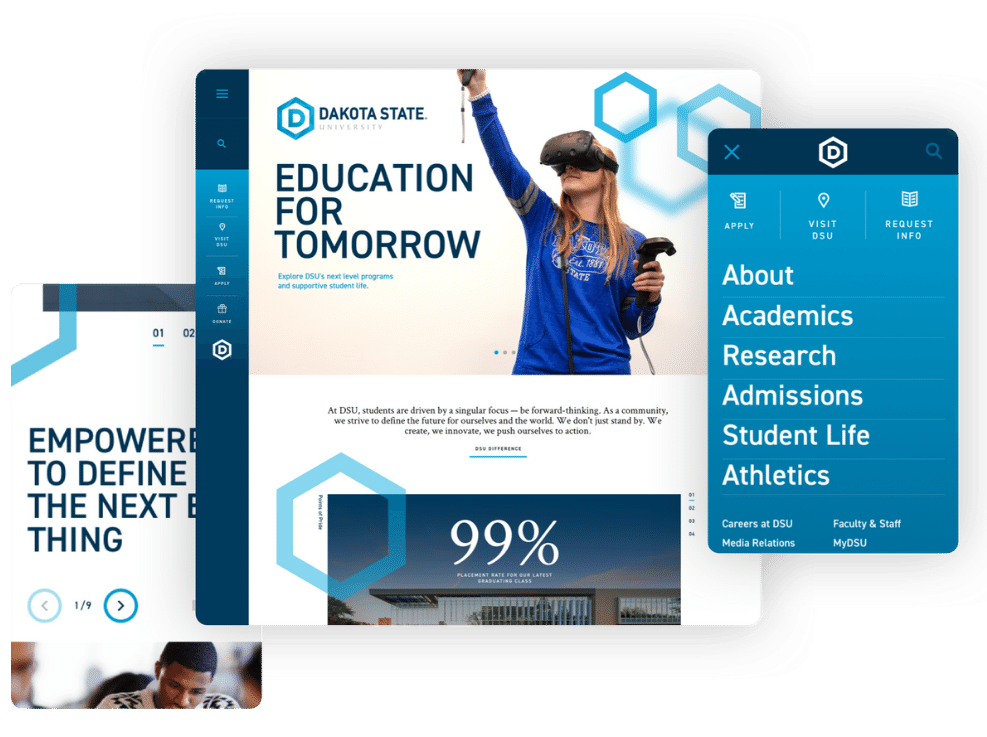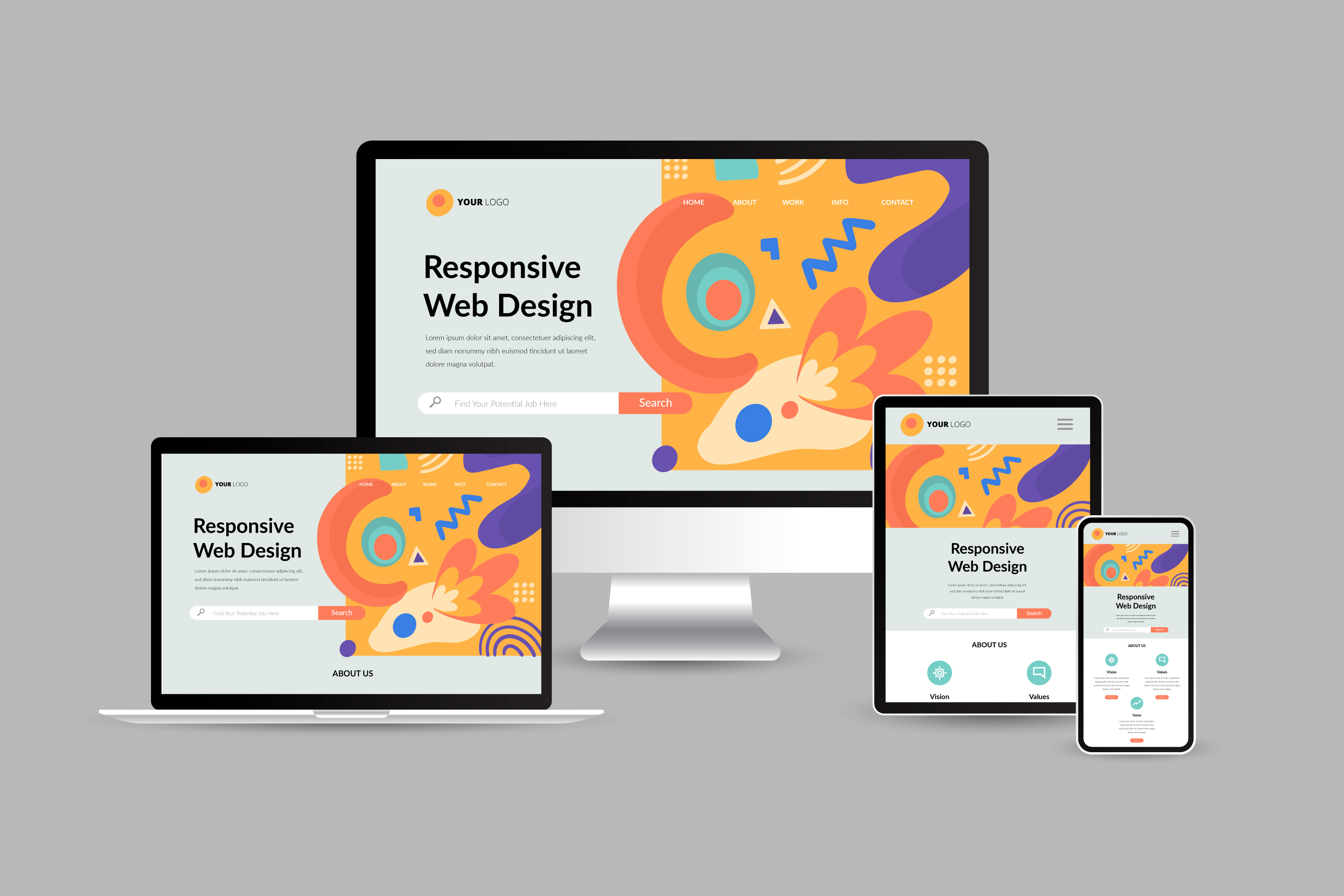The Duty of Responsive Website Design in Today's Mobile Market
The Duty of Responsive Website Design in Today's Mobile Market
Blog Article
Maximize User Experience With Cutting-edge Website Style Solutions
In today's digital landscape, optimizing individual experience via innovative website style options is vital for companies seeking to involve their target market effectively. The assimilation of interactive components can even more raise the customer journey, motivating a reevaluation of standard design techniques.
Recognizing User-Centric Design

To carry out user-centric style successfully, it is important to carry out comprehensive research study, consisting of individual meetings, surveys, and use testing. These research approaches supply beneficial information that educates style decisions, making sure that the last product straightens with individual assumptions. Furthermore, developing customer personas can aid developers empathize and picture with the end-users, assisting the style process toward extra pertinent solutions.
Furthermore, repetitive design is an essential component of user-centric methodologies. By continually screening and refining layouts based on customer feedback, developers can identify pain points and locations of improvement, leading to a much more sleek final product. Eventually, user-centric style is not just a stage in the growth process yet a continuous dedication to prioritizing user requirements, causing even more engaging and effective electronic experiences.
Value of Responsive Layouts
As digital interactions increasingly take place across a selection of tools, the value of responsive formats can not be overstated. A responsive format makes certain that a site adjusts perfectly to different screen sizes, from desktop screens to mobile phones. This flexibility is vital in today's multi-device landscape, where users expect a regular and engaging experience despite how they access content.
The main benefit of receptive layout is boosted customer complete satisfaction. When an internet site is enhanced for all tools, it reduces the need for zooming, scrolling, or straight navigation, which can lead and discourage customers to greater bounce prices. Furthermore, search engines like Google focus on mobile-friendly sites in their ranking formulas, making responsive layouts important for reliable SEO approaches.
Instead of taking care of separate variations of a site for different tools, a single, fluid design can be customized, conserving time and sources. Ultimately, investing in receptive designs is not just a trend; it is a fundamental principle of modern internet design that dramatically boosts user experience and engagement.
Enhancing Navigation and Accessibility
Efficient navigation and ease of access are crucial parts of a well-designed web site, significantly influencing customer interaction and contentment. An easy to use navigation structure enables visitors to locate information promptly and intuitively, lowering irritation and raising the likelihood of repeat sees. Applying clear, descriptive labels for navigation links, in addition to a rational pecking order, can assist users perfectly via the site.
Accessibility is equally crucial, making certain that all users, despite their abilities or disabilities, can engage with the site successfully. This can be attained via the use of proper shade contrasts, text dimensions, and alt message for pictures, which together boost the experience Click Here for visually impaired users. Incorporating keyboard navigating and display visitor compatibility expands accessibility for users with varied requirements.
Routine usability testing can give beneficial insights into navigating effectiveness and accessibility problems. By gathering comments from real users, designers can recognize pain points and make enlightened adjustments. Ultimately, focusing on navigating and accessibility not only fosters inclusivity yet also cultivates a favorable customer experience, reinforcing the brand name's commitment to top quality and user treatment in an increasingly digital landscape.
Using Aesthetic Hierarchy Properly
Visual hierarchy works as a leading structure in website design, directing users' interest to one of the most vital components on a web page. By strategically organizing visual parts such as spacing, color, and typography, designers can develop a clear pathway for individuals to adhere to. This framework not just improves individual experience but additionally improves content understanding.
One effective means to develop aesthetic pecking order is through using size and range. Larger aspects normally draw in even more attention, making headlines and key visuals prominent. Matching this technique with contrasting colors can better separate primary content from second details, guaranteeing that crucial information stands apart.
Additionally, the plan of components plays an essential role in directing user interaction. Employing a grid design can develop a cohesive flow, while whitespace helps to different content and decrease cognitive tons - Website Design. This deliberate spacing allows users to process information a lot more conveniently, bring about boosted engagement
Last but not least, making use of constant design patterns assists enhance visual hierarchy, offering users with acquainted cues as they browse the website. By prioritizing these concepts, developers can properly maximize individual experience, making sure that site visitors can effortlessly locate the details they seek.
Incorporating Interactive Elements
The unification of interactive components into website style can dramatically boost user interaction and total Get More Information experience. Interactive attributes such as sliders, polls, and quizzes not only mesmerize users yet likewise advertise active involvement, making the surfing experience extra memorable. important site By encouraging customers to connect, websites can effectively maintain focus and reduce bounce rates.
In addition, integrating vibrant content like animations and hover impacts adds an attractive layer of interactivity. These components can direct customers intuitively via the site, highlighting crucial information and contacts us to activity. As an example, computer animated buttons can attract focus and boost click-through rates.
In addition, customization through interactive tools such as chatbots or suggestion engines permits sites to accommodate individual preferences, promoting a sense of link. This customized method not just boosts individual satisfaction yet additionally urges repeat check outs.
Integrating analytics tools to track interactions offers beneficial insights into individual behavior, enabling constant improvement of the interactive aspects. Eventually, a well-designed interactive experience transforms a passive surfing session right into an engaging journey, resulting in increased user satisfaction and loyalty. Consequently, integrating interactive components is essential for maximizing individual experience in modern-day web site style.
Conclusion

In today's digital landscape, optimizing customer experience via cutting-edge site layout options is vital for services seeking to involve their target market successfully. Inevitably, focusing on navigating and ease of access not just fosters inclusivity but also cultivates a positive user experience, reinforcing the brand name's commitment to high quality and user treatment in a significantly digital landscape.

In conclusion, making best use of individual experience with cutting-edge internet site layout remedies necessitates a dedication to user-centric principles. Website Design.
Report this page